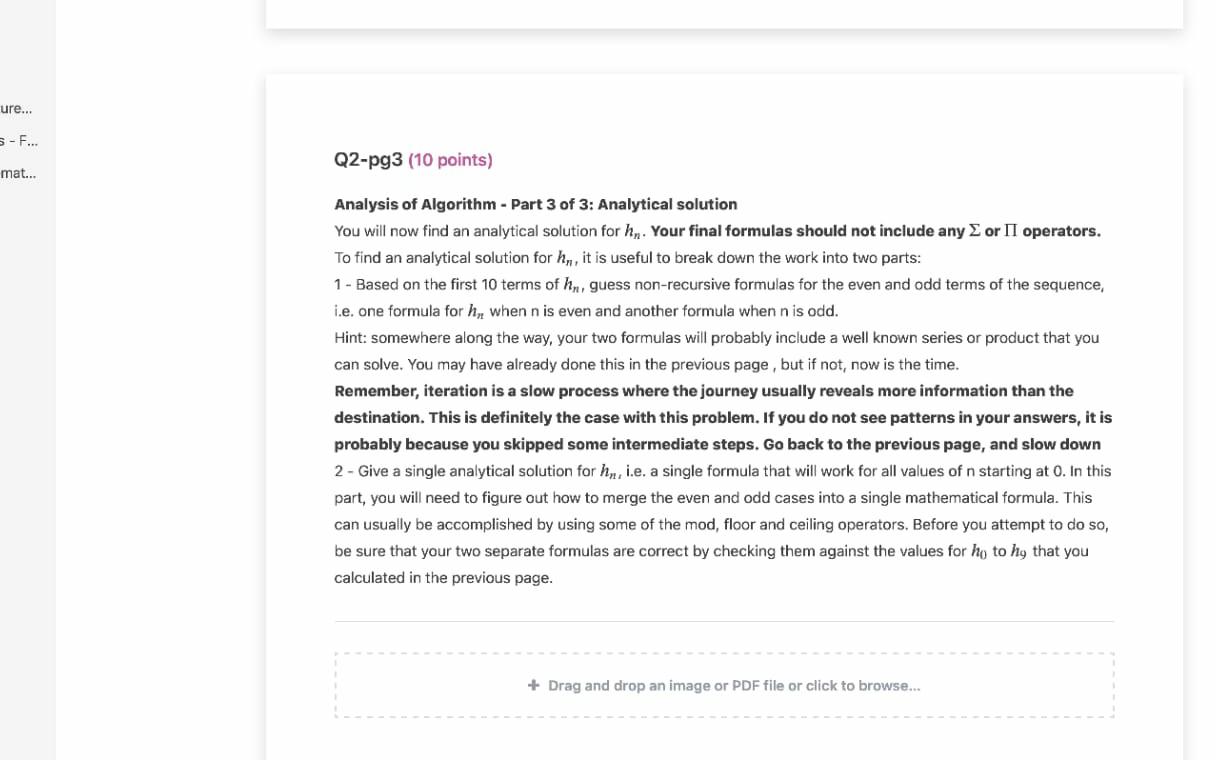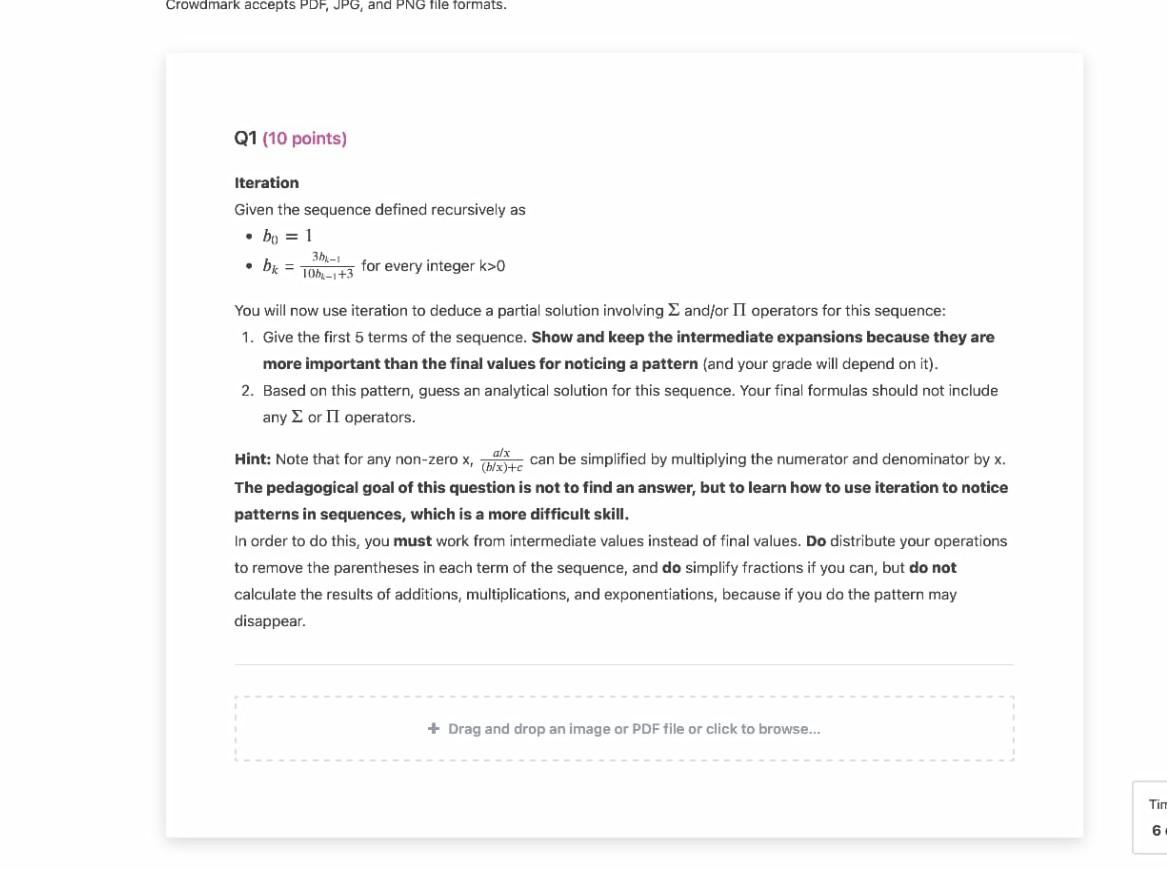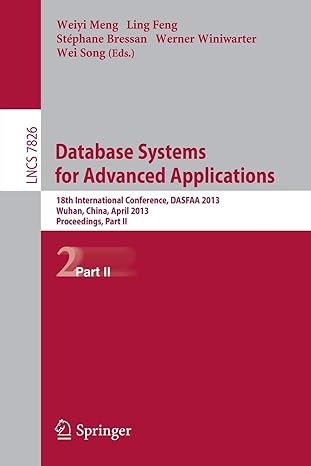Answered step by step
Verified Expert Solution
Question
1 Approved Answer
Q2-pg3 (10 points) Analysis of Algorithm - Part 3 of 3: Analytical solution You will now find an analytical solution for hn. Your final formulas


Q2-pg3 (10 points) Analysis of Algorithm - Part 3 of 3: Analytical solution You will now find an analytical solution for hn. Your final formulas should not include any or operators. To find an analytical solution for hn, it is useful to break down the work into two parts: 1 - Based on the first 10 terms of hn, guess non-recursive formulas for the even and odd terms of the sequence, i.e. one formula for hn when n is even and another formula when n is odd. Hint: somewhere along the way, your two formulas will probably include a well known series or product that you can solve. You may have already done this in the previous page, but if not, now is the time. Remember, iteration is a slow process where the journey usually reveals more information than the destination. This is definitely the case with this problem. If you do not see patterns in your answers, it is probably because you skipped some intermediate steps. Go back to the previous page, and slow down 2 - Give a single analytical solution for hn i.e. a single formula that will work for all values of n starting at 0 . In this part, you will need to figure out how to merge the even and odd cases into a single mathematical formula. This can usually be accomplished by using some of the mod, floor and ceiling operators. Before you attempt to do so, be sure that your two separate formulas are correct by checking them against the values for h0 to h9 that you calculated in the previous page. Q1 (10 points) Iteration Given the sequence defined recursively as - b0=1 - bk=10bk1+33bk1 for every integer k>0 You will now use iteration to deduce a partial solution involving and/or operators for this sequence: 1. Give the first 5 terms of the sequence. Show and keep the intermediate expansions because they are more important than the final values for noticing a pattern (and your grade will depend on it). 2. Based on this pattern, guess an analytical solution for this sequence. Your final formulas should not include any or operators. Hint: Note that for any non-zero x,(b/x)+ca/x can be simplified by multiplying the numerator and denominator by x. The pedagogical goal of this question is not to find an answer, but to learn how to use iteration to notice patterns in sequences, which is a more difficult skill. In order to do this, you must work from intermediate values instead of final values. Do distribute your operations to remove the parentheses in each term of the sequence, and do simplify fractions if you can, but do not calculate the results of additions, multiplications, and exponentiations, because if you do the pattern may disappear
Step by Step Solution
There are 3 Steps involved in it
Step: 1

Get Instant Access to Expert-Tailored Solutions
See step-by-step solutions with expert insights and AI powered tools for academic success
Step: 2

Step: 3

Ace Your Homework with AI
Get the answers you need in no time with our AI-driven, step-by-step assistance
Get Started


